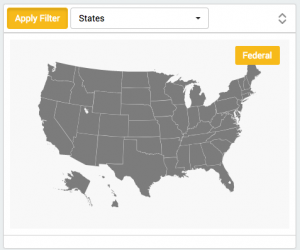Consider your Employee Handbook the constitution of your company. They serve as much more than a collection of corporate rules and procedures. Handbooks are often revered by courts as binding terms and conditions of employment.
When it comes to unavoidable disagreements with employees, your written policies will make or break you. So when building your company’s employee handbook, here are six things to include and eight things to avoid as the creator.
Top 6 Things Your Employee Handbook Should Include (and why)
1. These 3 Specific Policies
- An ‘At-Will’ Employment Disclaimer.
Some of the most important verbiage within this document as it states the employment is at will. Nothing helps you avoid implied employment contracts like a clear, concise sentence stating “employees can be terminated without cause or notice.”
- A Strong Anti-Discrimination Policy.
This is perhaps the most important policy to be sure is effective and correct. It should define employee harassment and have clear procedures to follow by listing out specific instructions. Instructions should include how to report the incident, who to report the claim to and any forms to complete. Employers are required to promptly investigate any and all claims with or without employees’ submission in writing.
- An “Introductory Period” Clause.
Known to most employers as a probationary period. To remain effective this correct verbiage must be applied instead.
2. Specific State and Industry Laws
Most employee handbook templates focus solely on Federal requirements, but state and local laws are also extremely important not to overlook. These can affect the legality of specific wording as well as implementing policies. Being in breach of these can leave your company open for lawsuits. (Example: Although FMLA is a Federal Requirement for qualifying employers, California has specific, state-based FMLA requirements, including required extended leave)
3. On that subject...Correct Laws.
Many companies google themselves into potential lawsuits on a regular basis. Laws and regulations change quite often, so your company shouldn’t rely on the first page of a search engine to determine the most up to date requirements. HR Professionals usually have their preferred systems to pull information, perhaps from a SHRM membership or another compliance database. Others prefer Automatic Handbook Builders that update when compliance requirements, laws or regulations change.
4. Training.
Too many companies don’t practice what they preach. Ensure your Supervisors have a working knowledge of your handbook’s policies and they review it with every update. Updates and supervisor review should take place every six months or less. Training your Supervisors, or Management will ensure the policies and standards you worked hard to create are upheld.
5. Accessibility.
Handbooks are one of the most important resources for employees to have access to. This is important to you as the employer because your handbook cannot mitigate risk if your employees cannot access it. Encourage your employees to review the handbook completely. Require them to sign an acknowledgment stating they have received and have access to the current update.
*Pro Tip.*
A great way to ensure your employees will review your handbook is to place a secret reward message within a policy. Rewards such as a free lunch or an additional paid day off a year can go a long way. Change the location of this reward’s wording with each update. Current employees will naturally talk to new employees about this, encouraging them to review it.
6. Legal Counsel Review or Attorney Written Content.
Some Employee Handbook Builders provide Federal, State and Industry specific attorney written content. A system that is up-to-date and reliable can limit the need to turn to your business attorney. This can save your company thousands each year.
Top 8 Mistakes to Avoid In Your Employee Handbook (and why)
1. Cookie Cutter Template.
When used correctly, Handbook templates can be a useful starting point for small businesses. Although you should be warned: templates usually only include federal requirements and blanket statement policies. For a business to use these, they must invest a great deal of time writing their policies while researching state, local and specific industry laws, regulations and policies. Make sure this is a smart investment of time and resources beforehand and research Handbook Builders prior to beginning the process. Some cost as little as $225 a year with automatic updates.
2. Legalese.
Yes, technically your handbook is a quasi-legal document. More importantly, it serves as an irreplaceable reference to inform your staff of your culture, expectations, and requirements. Therefore, it shouldn’t read like a legal document. Your staff should be able to understand your handbook with clear and concise language.
3. Overly Restrictive Disciplinary Policy.
By being too specific, listing out offenses or defining ‘steps taken’ per infraction, you can leave loopholes for employees to exploit. Not following your handbook during an infraction can open up the possibility of lawsuits or fines, and these can leave you unable to deviate from policy. To avoid these penalties, a disciplinary policy should include a specific disclaimer. This disclaimer should state: “As the employer, you reserve the right to enforce disciplinary steps as necessary, regarding the severity of the infraction.”
4. Frankenstein Patchwork Policies.
Imitation is the greatest form of flattery unless you’re ‘borrowing’ exact policy verbiage from others and revising only some of your own policies at a time. This can lead to contradictions or duplicate policies with different requirements, such as having Vacation, Military Leave and FMLA policies require different forms of notice. Read through your handbook with every policy update to ensure you stay consistent. There are also handbook builder services that provide automatic updates to avoid this confusion.
5. Attempting to make it a Binding Agreement.
To mitigate risk when changing policies, your handbook should state that it is not a contract. It should also state policies can be revised at any time. Contractual or post-termination agreements, such as Nondisclosures or Arbitration agreements, should be completely separate from your handbook. Some states have recently gone as far as to change employer laws regarding Arbitration agreements (See NY July Law Alerts).
6. Too Many Details.
Remember, both employees and employers are bound by the handbook. Extensive detail can bind your hands when it comes to following procedures or policies. Protect yourself from this by utilizing verbiage such as “Supervisors shall…” or “the company reserves the right to…”
7. Pretaliation.
Requiring whistleblowers to bring their complaints internally first can actually put your company in illegal waters. Review your company’s confidentiality agreements to ensure they do not limit or impede anyone from communicating with enforcement agencies. These agreements should be separate from your handbook’s acknowledgment. *See Binding Agreement above*
8. Inconsistent or Unrealistic Policies.
Not following your specific policies the same for each employee can mean possible discrimination lawsuits. Additionally, unrealistic policies can hinder your supervisors. If your managers and supervisors won’t enforce it, make sure it’s not part of your handbook.
In Conclusion
All in all, your company was uniquely created. Your handbook should outline everything you expect from your employees. It should define the culture your company strives to provide every staff member. Learn how our handbook builder helps your company stay compliant with a simple click of a mouse.
Everything you need to stay compliant including:
- Federal, local and industry specific contact.
- ERISA Attorney written content
- Automatic updates for every regulation, law and policy change.
And all for less than $230 a year.
Or, of course, you can check it out here.
Psst... pass it on.

You may also enjoy....
Continuous employee training is essential for maintaining a competitive edge in today’s fast-paced business environment. With the rapid advancement of …
Can a customized employee handbook truly transform your business operations? The answer is a resounding yes. The right employee handbook …
Handling the complexities of HR compliance is crucial for small businesses. At AllMyHR, we’re committed to making this process straightforward …
Navigating the complexities of employee training is no small task, but with Learning Management Systems (LMS), companies are finding practical …









